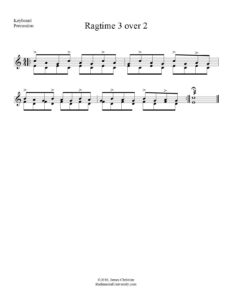Bit by bit, I am posting videos of the etudes from my book The Art of Multi-Tenor Drumming. This is multi-tenor etude #7 entitled “The Fool in the Mirror.” Its main theme is pretty catchy, and it focuses on developing 16th note patterns around the drums.
Here are the performance notes from the book:
There is nothing in this etude exceptionally flashy from a visual standpoint, but the melody is quite catchy, and this is one of my favorite etudes to play in this book. (Of course, I think all of the etudes are great!) The whole piece gradually moves from playful syncopated rhythms to more intense driving rhythms, but it returns to a light-hearted note at the very end. The first section (mm. 1-5) establishes the playful syncopated main theme. The second section (mm. 6-9) contrasts the first with a slightly less syncopated 8th note double stop quasi-groove pattern. The third section (mm. 10-13) is a more driving segue that reiterates the main ideas of the first section. The fourth section (mm. 14-19) is the longest (with repeats), and it is the most driving; it has very little syncopation, and it focuses on some basic paradiddle patterns mixed with doubles and 16th note singles rhythms. The final section (mm. 20-22) is the shortest, and it caps off everything by quickly highlighting the previous themes.
Enjoy the video!

